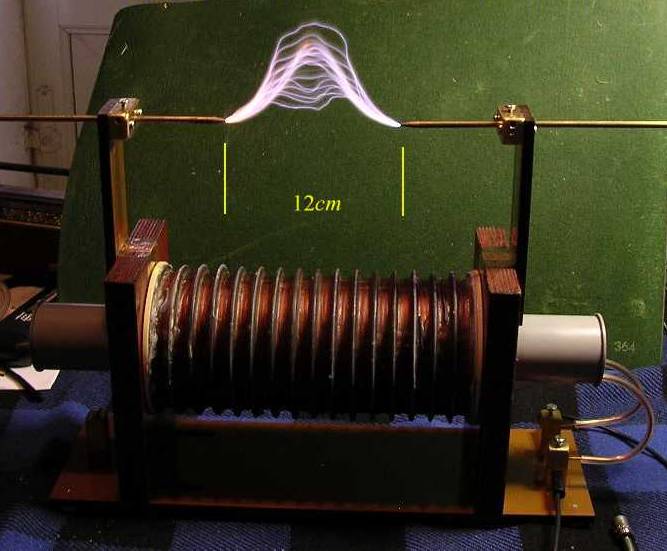
Kurt's
Induction Coil Farm


Process of Construction (on Flickr)
Waveforms
Secondary Repair
Design Helper.
Design Excel
| The following text is essentially the same, as on my earlier induction coil webpage , please have a look there for the former developments. -------------------------
Induction coils fascinated me, from the very beginning of my interest in electricity. They're really ancient devices (like an "older brother" of Tesla coils) , invented and developed around 1850 by famous people from J.Henry to H.Ruhmkorff and others (see also Lyonel Baum's site ). Very widespread contemporary application is in automotive ignition coils, relevant to tesla coilers as power supplies for tiny TC's, but more so as HV elements in the recent development of triggered spark gaps. The analysis of induction coils reveals a close proximity to the one on Tesla coils. They're NOT just simpler than Tesla coils, at least at the beginners level (speak: lumped parameter models). The main differences are: 1.) Starting energy is stored as Li2/2, instead of CU
2/2 in TC's (at least in conventional "interrupter"-mode). Relevant common properties of TC's and induction coils: 1.) Both should be treated as inductively coupled LCR circuits;
not exclusively as "AC transformers". The really weak element of the old induction coils was the
"interrupter", being it a Wagner-Hammer, a Mercury Turbine Interrupter or
a Wehnelt Electrolytic Breaker. Modern power electronic devices offer an
alternative: if designed and tested, based on a good simulation model of
the induction coil itself, they will probably outperform the ancient interruptors, see below our ANDIRUPTOR example! |